Heat management observations – Increase productivity
Content
How to carry out correct heat management observations
DanBred breeding animals deliver extraordinary reproduction results and careful heat observation will increase insemination success and greatly contribute to optimising production flows.
Increase productivity with correct heat check management
Successful insemination revolves around one core principle: locating sows showing the standing reflex or standing heat. The standing reflex is a natural behaviour that ensures the sow can withstand a boar’s weight during breeding. It indicates that the gilts and sows are receptive to the boar, ovulating and capable of conceiving. Accurate identification of sows in heat ensures the correct timing of insemination which has shown not only to reduce the number of sows not conceiving, but both farrowing rate and litter size increase (Nissen, 1995). DanBred breeding animals deliver extraordinary reproduction results and careful heat observation will greatly contribute to optimising production flows.
Achieve full potential from DanBred by introducing systematic routines on heat observation
Inseminations should be timed using standing heat as a reference point. (Flowers 1996). The approach to accurate heat detection and timing of insemination has significant impact on reproductive success (Sørensen, 2009). If not pregnant or lactating, mature sows will naturally come into heat every 18 – 23 days or 4-5 days after weaning. During heat observations, stimulation of the sows impacts the release of hormone oxytocin, which causes a strong muscle rigidity that is expressed as the standing heat. Structured human stimulation has shown to increase the expression of heat (Madsen, 2003) and introducing mature, healthy and high libido teaser boars will enhance the signs as boar pheromones evoke heat (Flowers 1996). Heat observation is a technique which has to be learned and trained before it is mastered. Consistent, planned and focused heat observations will result in increased reproductive success. Onset is triggered by physiological mechanisms primarily caused by the lack of udder stimulation from piglets. Foster sows or returning sows might deviate from a normal heat cycle, which is why these should have extra attention. Sows which show standing heat soon after weaning generally have a relatively long heat whereas sows which show standing heat relatively long after weaning have a short heat (Nissen, 1995). As ovulation happens about 2/3 into the heat, the optimised conception rate is achieved if the sows are inseminated from 24 hours before until 4 hours after ovulation (DPRC, 2018). Heat detection for repeat breeds should identify all females in heat (wean sows, gilts and repeats) early in their oestrus cycle. The goal should be to identify 80%+ of non-pregnant animals by 4 weeks of gestation and more than 95%+ by 8 weeks of gestation as this will minimize the impact of non-productive days as well as the associated negative production and financial impact.
Easy steps for accurate heat observation
Follow the plan below to improve productivity
Take care in finding the correct sows
Sows weaned after 3-4 weeks of lactation should be heat checked at least once per day from 3 days after weaning until insemination

Sows deviating from a normal cycle, such as foster sows and returns should be heat checked at least once per day from day 1 until insemination

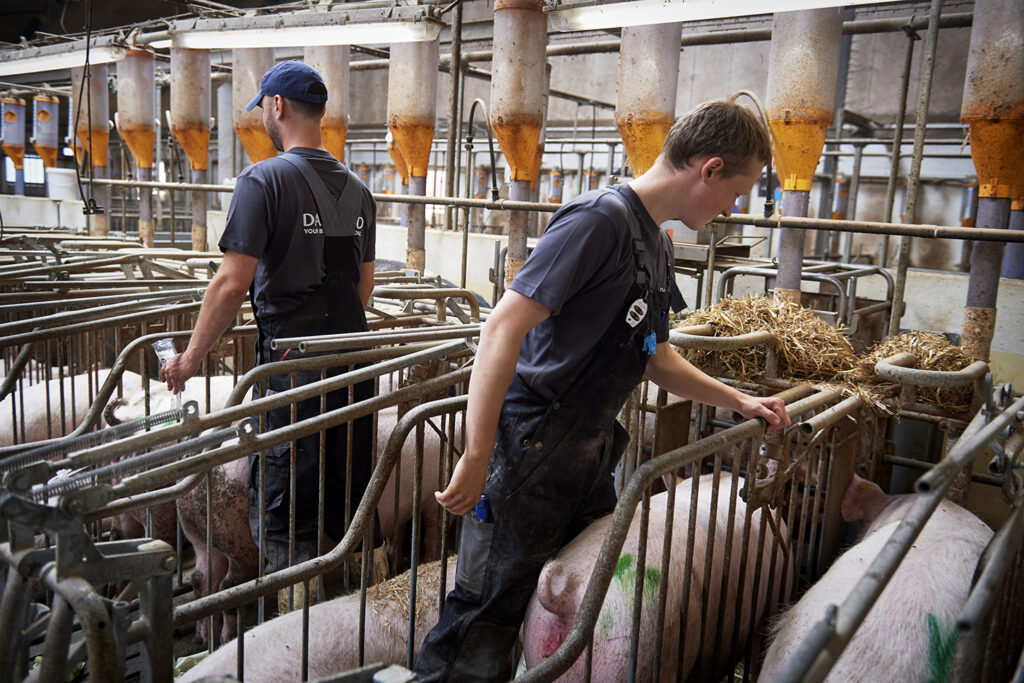
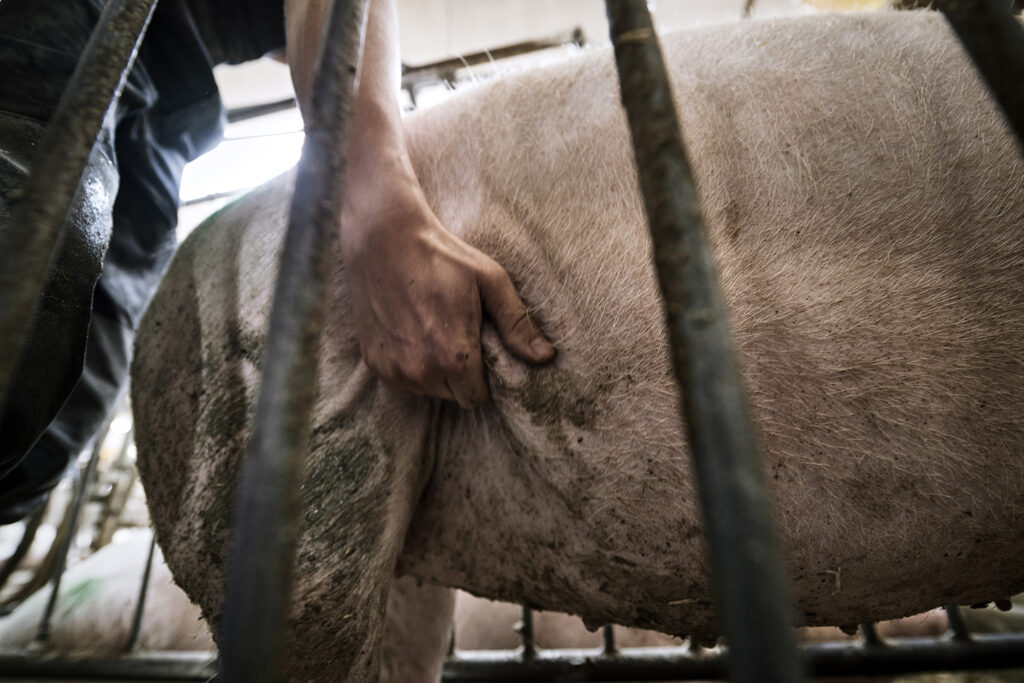
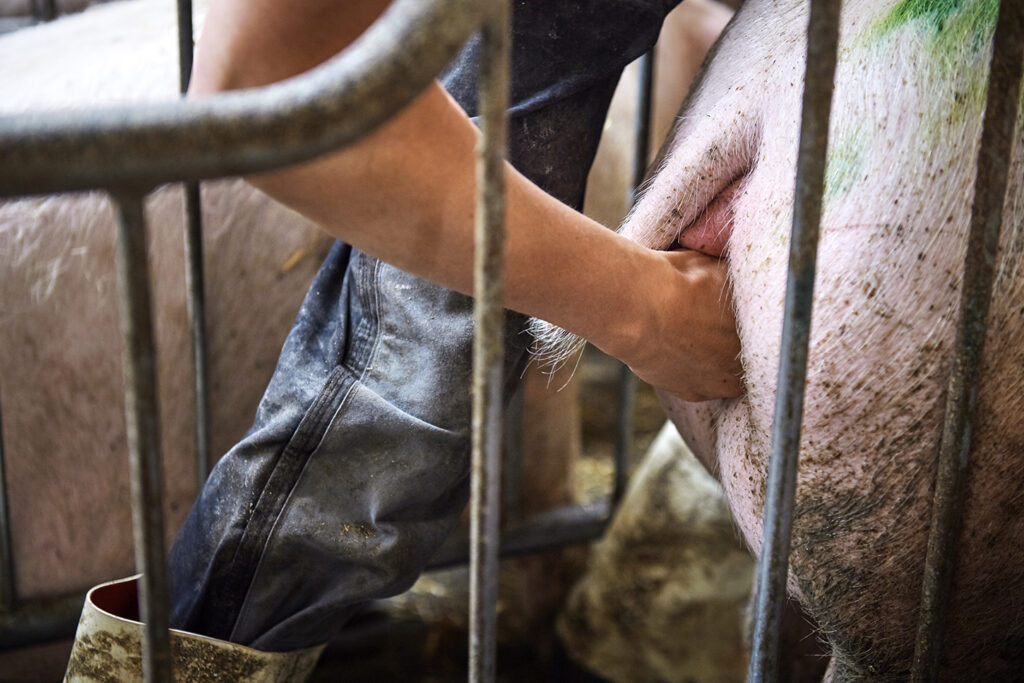
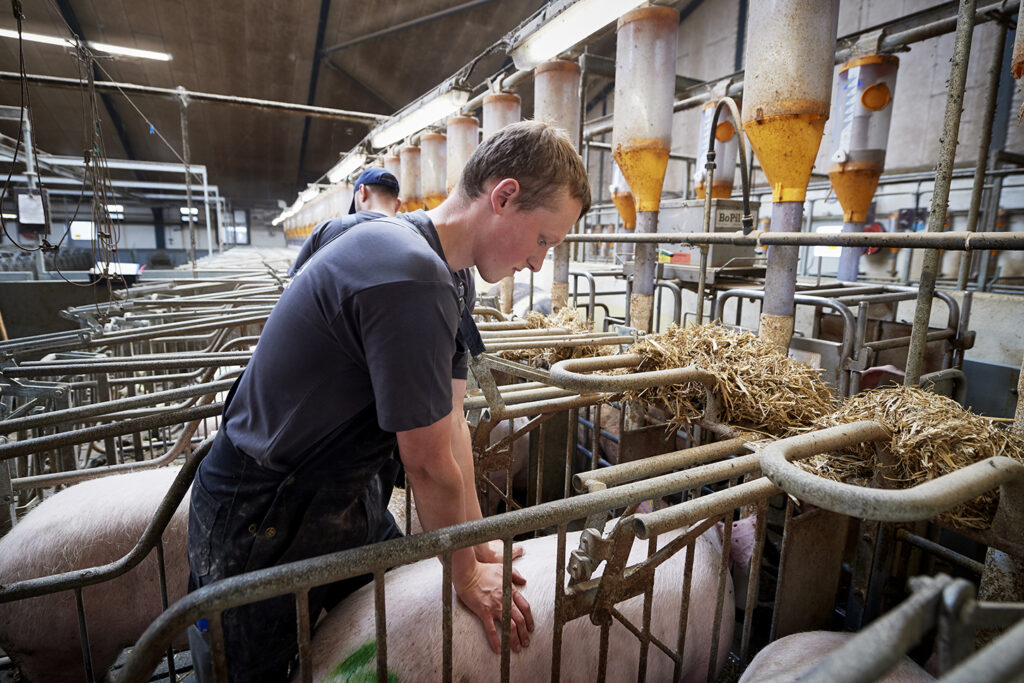
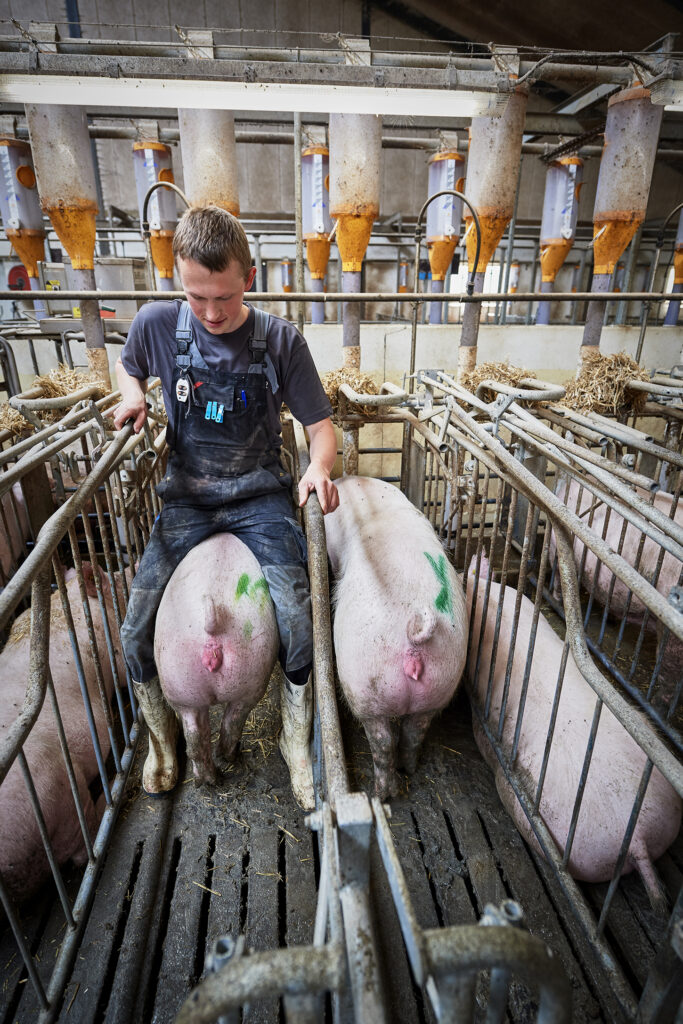
1) Observe the 8 signs of heat
The sows can display the onset or presence of heat with several conditions.
- Swelling and redness of the vulva
- Clear fluid discharge from vulva
- Lack of appetite
- Increased activity/restlessness
- Perked or twitching ears
- Tail flicking up and down
- Vocalization or grunting
- Standing reflex
2) Use a teaser boar
- Place the boar in front of a limited amount of sows- 5-6 at one time is enough
- Ensure that nose-to-nose contact between boar and sows is possible.
- If boars are housed together, use multiple boars to enhance nose to nose contact.
- Ideal boar to sow ration is 1 boar per 250 sows and gilts in inventory or heat induction age
- Set up a protocol for the replacement of teaser boars, changing them every 6-18 months.
3) Stimulate the sows
Stimulate the sow and gilts by following these five points:
- Apply pressure to the flank area by gently lifting or pushing the flank.
- Lift the groin and gently rub the underline.
- Push with a fist below the genital opening when doing so check the vulva for clear discharge.
- Grip and massage the corners of the sows’ hips.
- Performed a back pressure test (riding test) the sow must be willing to let you sit on her without agitation
Standing heat is confirmed when the sow stands still on strong rigidity legs. Heat detection should be performed by only well trained employees.
4) Plan insemination
When standing heat is confirmed insemination should be according to the weaning day:
- Standing heat on day 3 after weaning: Inseminate in the afternoon on day 4, repeat after 24 hours.
- Standing heat on day 4 after weaning: Inseminate in the morning on day 5, repeat after 24 hours.
- Standing heat on day 5 after weaning: Inseminate in the afternoon on day 5, repeat after 24 hours.
- Standing heat after day 5 after weaning: Inseminate as soon standing heat is seen and repeat after 12 hours.
- Sows deviating from a normal cycle, such as foster sows and returns: inseminate as soon standing heat is seen and repeat after 12 hours.
Note that foster sows can come into heat in the farrowing unit, as the change from bigger pigs to smaller pigs can induce heat due to the reduced stimuli of the udder. Look for signs of heat with the foster sows- inseminate if standing heat is seen and repeat after 12 hours.
References
Danish Pig Research Centre (DPRC) (2018): H7B – Brunstkontrol af søer før løbning. SEGES Videncenter for Svineproduktion. Retrieved 28/02/19 https://svineproduktion.dk/viden/i-stalden/management/manualer/repro
Danish Pig Research Centre (DPRC) (2018): H7C – Inseminering af søer. SEGES Videncenter for Svineproduktion. Retrieved 28/02/19 https://svineproduktion.dk/viden/i-stalden/management/manualer/repro
Flowers W. L. (1996): Performance expectations of different mating systems; Leman Swine Conference 25:63-66
Madsen, M. T. (2003): Effekt på reproduktionsresultaterne af human stimulation af søer ved brunstkontrol og inseminering, Meddelelse nr. 614, Videncenter for svineproduktion, Den rullende afprøvning
Nissen, A. K. (1995): Tidspunkt for insemination i relation til brunst og ægløsning. Meddelelse nr. 313, Landsudvalget for Svin, Videncenter for svineproduktion, Den rullende afprøvning.
Sørensen, G. (2009): Højere faringsprocent, Erfaring nr. 0912, Videncenter for svineproduktion, Den rullende afprøvning




